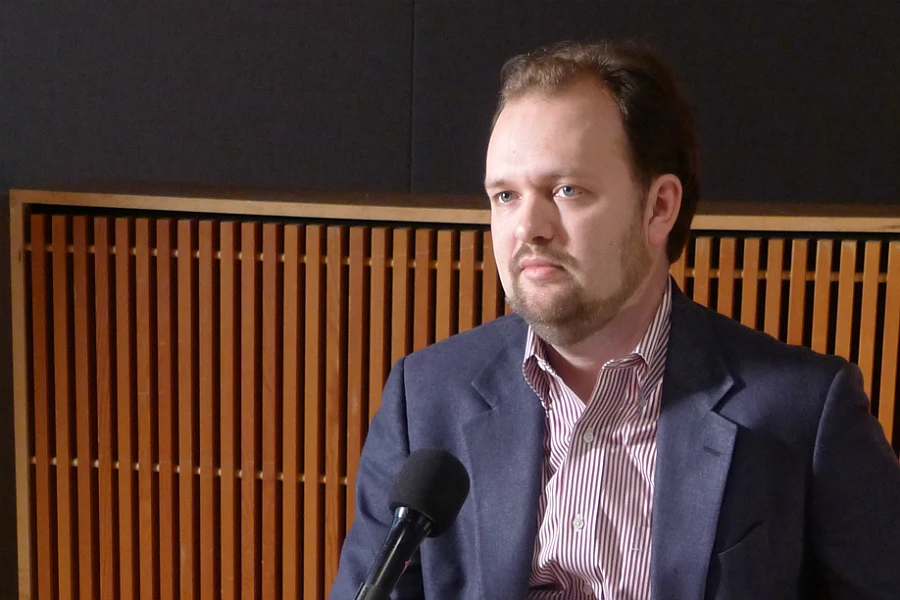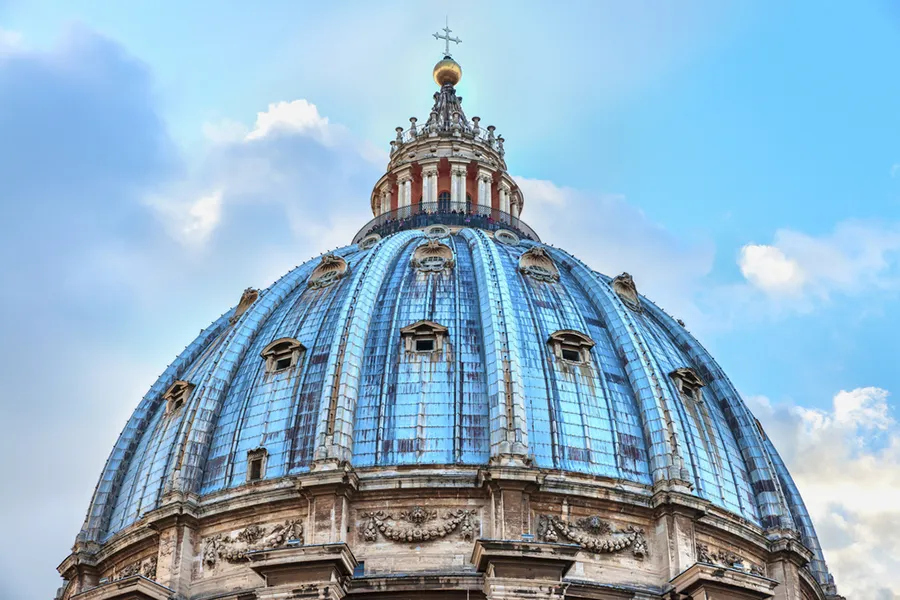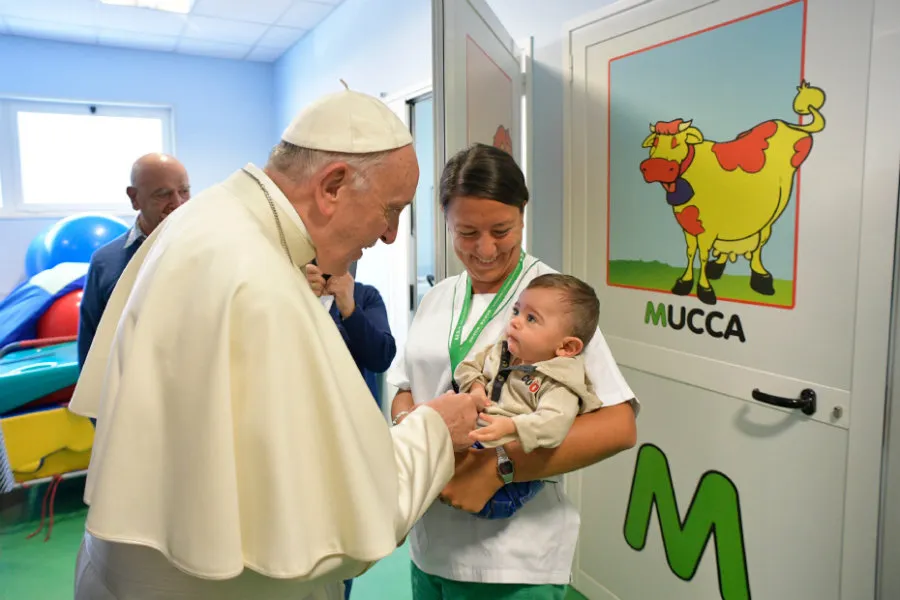
New York City, N.Y., Sep 22, 2017 / 04:55 pm (CNA/EWTN News).- New York Times columnist Ross Douthat invited Villanova theologian Massimo Faggioli to a debate, and Faggioli has said that he would be open to the idea.
“I am really looking forward to meeting him in person, as soon as is possible. I don’t know if this event is going to happen, in what form. I am totally open to it,” Dr. Massimo Faggioli, a theology professor at Villanova University, told CNA of Ross Douthat’s invitation to a debate.
Douthat, a Catholic, is an author and op-ed columnist at the New York Times, writing on religion, politics, morality, and culture. Faggioli is a theology professor, church historian, and Catholic commentator at Villanova University. Douthat and Faggioli have both been referred to as “culture warriors,” one a conservative, the other a liberal.
In a Sept. 20 column, “Expect the Inquisition,” Douthat noted two recent examples of priests or theologians losing academic positions or speaking engagements because of online campaigns opposing them.
Instead of “conflicting inquisitions, liberal and conservative,” Douthat proposed more “serious argument” and “respectful debate” amongst academics, theologians, and bishops.
In particular, Douthat invited Faggioli – with whom he has previously engaged in online debates, most notably in October of 2015 during the Synod on the Family – to a debate. “I myself am only a train ride away from Professor Faggioli’s Villanova and would happily allow him to educate me on my theological deficiencies on a platform of his choosing,” he said.
Faggioli told CNA on Thursday that he would be open to such a debate.
Faggioli noted that he would not want a debate that would resemble a “boxing match,” but rather “just two individuals there to present a much bigger debate.”
“I think it’s much bigger than Ross and Massimo. But it’s certainly a step forward from two years ago, when there was a much harsher exchange,” he said. Faggioli said he would be open to meet “at Villanova, or at Commonweal, or wherever that can happen.”
“We have to find a way to meet and talk,” Faggioli said, “but there’s a lot of noise that is really part of the environment. And that is still violent. That’s the problem. And we have to find a way to neutralize those violent voices who have no interest of exchange of ideas.”
“What’s a bit disturbing,” he added, is that “if you read the comments that their readers post on their column or their messages against me following Douthat’s article yesterday, that is scary, honestly,” he said.
In an interview with CNA, Faggioli questioned Douthat’s ability to comment on theological and ecclesial issues. “It is striking that he’s commenting with this cavalier attitude on important issues with a fundamental lack of knowledge, I would say.”
“And about what’s going on in Francis’ pontificate, it seems to me that he has a very sketchy idea with very little knowledge of the real people appointed by Francis, what they have published, what they have said, their curriculum, who they are,” Faggioli said.
Although Douthat’s recent column was “a bit less arrogant, a bit less aggressive, looking for a dialogue with people like me with whom he has disagreed for a couple of years now,” he said, “there’s the same lack of knowledge and of curiosity for what this Pope is doing.”
“He doesn’t know, he doesn’t read what the other people are doing. And it’s deeply, deeply unfair and false to make a caricature of them as the bolshevik of Pope Francis,” he said.
Douthat and Faggioli have recently clashed over response to “Building a Bridge,” a book by Fr. James Martin, SJ, addressing LGBT issues in the Church. Fr. Martin was recently disinvited to address seminarians at Theological College, a seminary in Washington, DC, after outcry and protests from online groups Faggioli has called “cyber-militias.”
In a September 18 essay published by La Croix, Faggioli criticized the “campaign of hatred and personal attacks” against Fr. Martin, and said that “this sort of vitriol is profoundly changing the communion of the Catholic Church.”
“It signals a new kind of censorship that uses verbal violence to intimidate individual Catholics, as well as institutions within the Church,” he said.
In his September 20 column, Douthat responded that “Professor Faggioli’s sudden concern about online campaigns was interesting to me, because it was just a short while ago that the professor was himself busy organizing an online campaign against myself.”
Douthat was referring to an October 2015 letter to the New York Times, written by Faggioli and more than 50 other academics, objecting to a column by Douthat. Among the signatories was Nicholas P. Cafardi, a civil and canon lawyer who served as chairman of “Catholics for Obama,” and characterized President Barack Obama as “pro-life” in 2012.
In the criticized column “The Plot to Change Catholicism,” Douthat speculated that the Pope sided with the proposal of Cardinal Walter Kasper that the divorced and remarried be allowed to receive communion, without first receiving a declaration that their first marriages were invalid. Pope Francis picked synod delegates who would be sympathetic to such a position, Douthat said.
In subsequent comments on Twitter, Douthat criticized supporters of the so-called “Kasper proposal” at the synod. “If you take a view the church has consistently rejected, you don’t get to whine when the ‘h’ word comes up,” Douthat said, adding, “Own your heresy.”
The response letter questioned Douthat’s credibility. “Aside from the fact that Mr. Douthat has no professional qualifications for writing on the subject, the problem with his article and other recent statements is his view of Catholicism as unapologetically subject to a politically partisan narrative that has very little to do with what Catholicism really is,” the letter stated.
In response to that letter, Bishop Robert Barron defended Douthat, writing at the Word on Fire website: “If a doctorate in theology were a bottom-line prerequisite, we would declare the following people unqualified to express an opinion on matters religious: Thomas Merton, Flannery O’Connor, Graham Greene, Evelyn Waugh, C.S. Lewis, William F. Buckley, W.H. Auden, or to bring things more up to date, Fr. James Martin, George Weigel, and E.J. Dionne. In point of fact, it is often the case that those outside of the official academy often have the freshest and most insightful perspectives, precisely because they aren’t sequestered in the echo-chamber of politically correct faculty lounge discourse.”
While no debate has been scheduled, CNA has learned that details for the possibility of a debate are being explored, and may soon be announced.
Faggioli told CNA, “As long as it’s not a debate like Muhammad Ali versus George Foreman; I don’t want this to become a personal thing. But I’ll be happy to meet with him and discuss with him.”
Douthat also affirmed his openness to a debate. “I meant what I wrote,” he told CNA. “I’m happy to debate him when our schedules, as fathers of young children, will allow for it.”
Douthat told CNA that serious conversation about issues is important for Catholics. In his September 20 column, he wrote, “There is no way forward save through controversy. Postpone the inquisitions; schedule arguments instead.”
If Douthat and Faggioli meet for a debate, controversy may well point a way forward.
 […]
[…]






